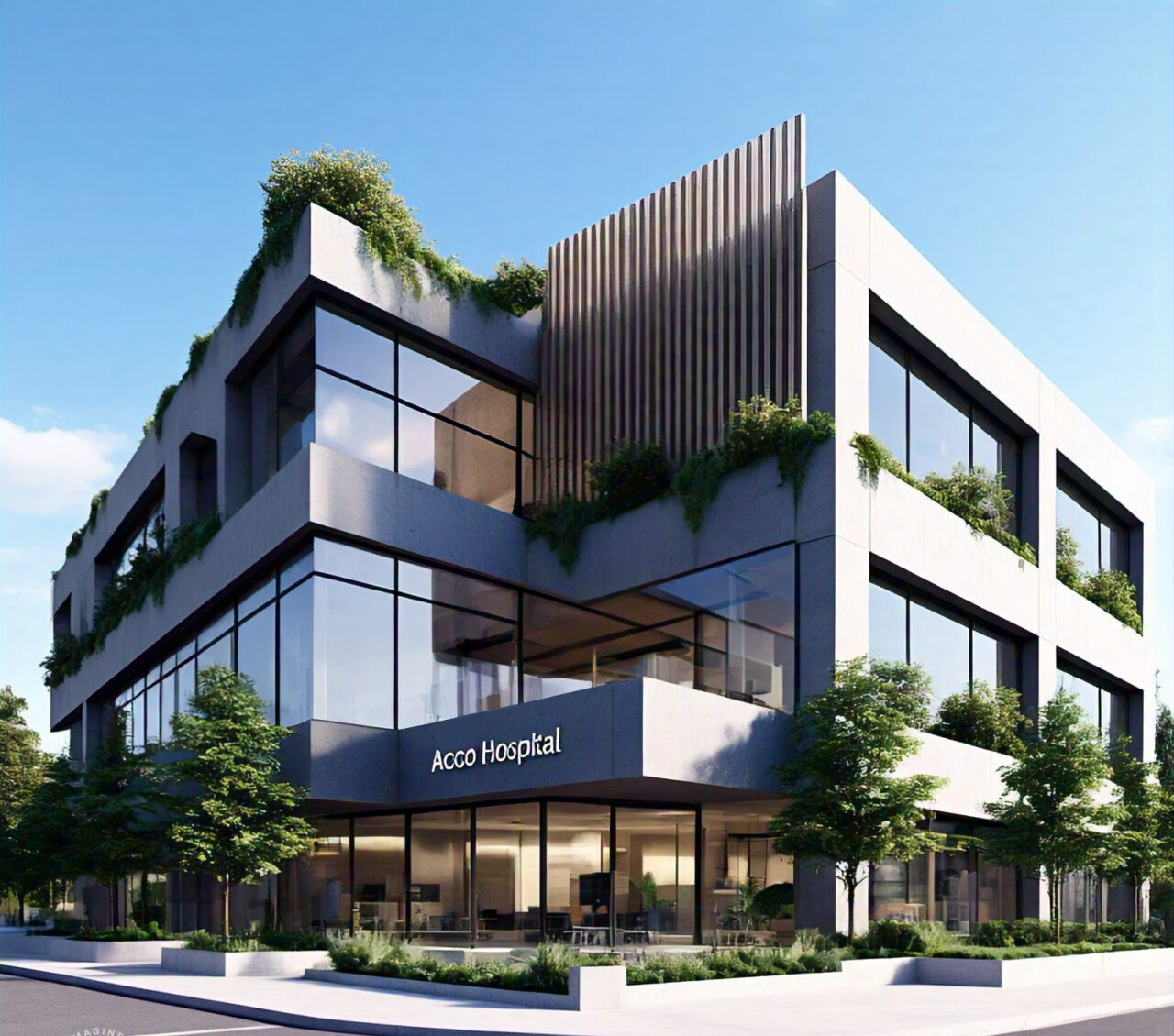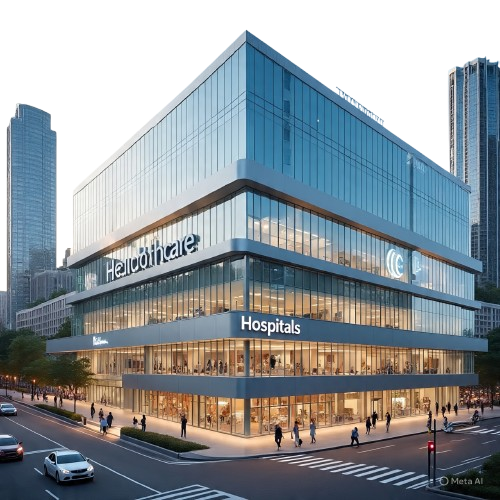
Top Hospital Interior Design & Construction Services in Pakistan
Hospital design is rapidly evolving in Pakistan, where healthcare facilities are embracing modern architectural trends to meet the demands of a growing population and advancing technology. The interior design and construction of hospitals are vital not only for creating visually appealing spaces but also for improving patient outcomes, staff efficiency, and operational functionality.
This article delves into the top hospital interior design and construction services in Pakistan, focusing on the essential features, of leading companies, and how these firms are revolutionizing healthcare environments through innovative and patient-centered designs.

Why Interior Design Matters in Hospitals
Interior design plays a crucial role in healthcare facilities, affecting everything from patient recovery to the daily efficiency of medical staff. Thoughtful design can:
- Enhance patient healing by creating calming, comfortable environments.
- Increase operational efficiency by ensuring that spaces are functional, intuitive, and easy to navigate.
- Improve infection control through the use of hygienic materials and smart layouts that reduce the spread of bacteria.
- Boost staff productivity and morale with ergonomic workspaces, natural lighting, and easy access to resources.
In Pakistan, the shift towards more modern and efficient hospital interior design is not only about aesthetics but also about enhancing the overall healthcare experience.
Key Features of Modern Hospital Interior Design
1. Patient-Centered Design
One of the most important trends in hospital interior design is the patient-centered approach, which prioritizes the needs and comfort of patients. This means creating environments that promote healing, reduce stress, and provide privacy. Some of the common elements include:
- Private patient rooms with space for family members.
- Natural light and soothing color schemes to create a calm atmosphere.
- Acoustic control to reduce noise levels, which can disturb patients and disrupt sleep.
- Easy access to nature, whether through windows with views or dedicated healing gardens.
2. Infection Control Through Design
Hospital interiors need to be designed with infection control in mind. In Pakistan, where healthcare-associated infections are a significant concern, the design of a hospital can help mitigate these risks. Key strategies include:
- Using non-porous materials for surfaces that are easy to clean and disinfect.
- Antimicrobial flooring to reduce the spread of bacteria.
- Ensuring separation between patient and staff areas to minimize cross-contamination.
- Creating dedicated isolation areas for contagious patients.
3. Sustainable Design and Green Practices
Sustainability is increasingly becoming a focus in hospital construction and interior design across Pakistan. Green practices help reduce a hospital’s environmental footprint and operational costs while creating healthier environments for patients and staff. Examples of sustainable practices include:
- Energy-efficient lighting such as LED systems.
- Use of recycled or eco-friendly materials in construction and finishes.
- Rainwater harvesting and water-saving fixtures.
- Solar panels and other renewable energy solutions.
4. Smart Technology Integration
Modern hospital interiors incorporate smart technologies that improve both patient care and operational efficiency. In Pakistan, many hospitals are beginning to integrate systems that allow for:
- Automated patient monitoring through IoT devices.
- Smart lighting and HVAC systems that adjust based on occupancy, reducing energy usage.
- Interactive patient rooms where patients can control their environment, such as adjusting lighting or calling for assistance.
Top Hospital Interior Design Companies in Pakistan
1. ACCO Architects
One of the pioneers in the architectural field in Pakistan, ACCO Architects has made significant contributions to hospital design. The firm is known for its minimalist, functional, and aesthetically pleasing designs that integrate sustainable elements and smart technologies. Their projects often focus on creating spaces that balance form and function, ensuring that hospitals are both beautiful and operationally efficient.
2. Arshad Shahid Abdulla (ASA)
ASA Architects is a renowned firm in Pakistan with extensive experience in hospital design. They specialize in creating patient-friendly environments that reduce stress and promote healing. Their designs often include features such as healing gardens, large windows for natural light, and sustainable materials. ASA also focuses on ensuring that their hospital interiors are functional for both patients and healthcare staff.
3. Zahir Khan & Associates
Zahir Khan & Associates (ZKA) is another leading architectural firm in Pakistan, known for its modern, high-tech designs. ZKA focuses on integrating smart technologies into hospital interiors, ensuring that patient care is streamlined and staff workflows are optimized. Their hospital designs are known for being highly adaptable, allowing facilities to evolve with changing healthcare needs.
4. Nayyar Ali Dada & Associates
Nayyar Ali Dada is a name synonymous with innovation in the architectural industry. His firm has contributed to several hospital projects across Pakistan, focusing on creating sustainable and patient-centered designs. The firm is known for its attention to detail and use of eco-friendly materials, ensuring that hospitals are not only functional but also environmentally responsible.
Case Studies: Leading Hospital Interior Design Projects in Pakistan
1. Shaukat Khanum Memorial Cancer Hospital
Shaukat Khanum Memorial Cancer Hospital (SKMCH) in Lahore is a landmark in modern hospital design. The interior of the hospital is designed to promote patient comfort and well-being, with large, private rooms, ample natural light, and dedicated spaces for families. The design also integrates infection control measures and energy-efficient systems, making it a model for future hospital projects in Pakistan.
2. Aga Khan University Hospital
The Aga Khan University Hospital (AKUH) in Karachi is another example of a well-designed healthcare facility. The hospital’s interior focuses on creating a patient-friendly environment, with spacious waiting areas, private treatment rooms, and access to outdoor spaces. AKUH is also a leader in incorporating technology into its design, with telemedicine capabilities and real-time patient monitoring systems.
3. Indus Hospital
Indus Hospital is a non-profit healthcare facility in Karachi that has been lauded for its functional and sustainable design. The interior is simple yet effective, with spaces designed to maximize efficiency while ensuring patient comfort. The use of eco-friendly materials and energy-saving systems makes Indus Hospital a leading example of sustainable hospital design in Pakistan.
The Role of Construction Services in Hospital Design
While interior design sets the stage for a functional and healing environment, construction services are essential in bringing these designs to life. In Pakistan, there are several construction firms that specialize in healthcare facilities, ensuring that hospitals are built to the highest standards.
Key Considerations in Hospital Construction
- Compliance with Healthcare Regulations
Hospitals must be built according to stringent healthcare standards and regulations to ensure patient safety, infection control, and operational efficiency. Construction firms need to be aware of these requirements and implement them throughout the project. - Modular and Adaptable Designs
Modern hospital construction often involves modular designs that allow for future expansion or reconfiguration. This is especially important in Pakistan, where healthcare needs are rapidly evolving. - Durable Materials
Hospitals experience high foot traffic and wear, so construction firms must use durable, high-quality materials that can withstand the demands of a busy healthcare environment while remaining easy to clean and maintain. - Collaboration with Designers
Construction firms must work closely with interior designers to ensure that the design vision is fully realized. This includes attention to detail, such as ensuring that plumbing, electrical, and HVAC systems are installed in a way that complements the design and enhances functionality.




